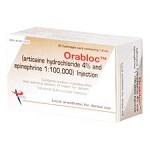Aseptic processing is changing the way many businesses are bringing their products to market, and the dental industry is no different.
Did you know that aseptic processing is a commonly used form of sterilization in the beverage industry? If your answer to that was no, you aren’t alone. Also, if your answer was “What’s aseptic processing?” you’re still not alone. Aseptic processing is a form of sterilization that’s growing in popularity, but it’s still far from the norm.
Terminal sterilization is a more traditional method of sterilizing products. Put simply, terminal sterilization goes like this: fill a container, seal it and then sterilize it. That means that a product’s packaging, once sealed, must be able to sustain the sterilization methods required for that product.
Aseptic processing is a simple idea. Sterilize a container, sterilize its cap, sterilize its contents and put them together. Voilà, right? Well, of course, when it comes to the logistics it’s not that simple. But when aseptic processing is properly carried out, it gives you an already-sterilized product that is ready to go to labeling and packaging. There are other benefits to aseptic processing, too.
Take Orabloc, for instance. Orabloc is an aseptically manufactured anesthetic (articaine HCl 4% and epinephrine 1:100,000 and epinephrine 1:200,000). Just like other articaines, Orabloc provides rapid onset of complete anesthesia, lasting about an hour for infiltration and up to two hours for nerve block. But unlike articaines processed through terminal sterilization, Orabloc has very few manufacture-related degradation products. Orabloc has only about half the overage of competitors with the same label claim. And Orabloc has a 24-month shelf life when stored at room temperature.
Aseptic processing makes all of that possible for Orabloc. Plus, Orabloc and other aseptically processed pharmaceuticals using rubber closures have virtually zero leaching, because the rubber closures are not exposed to the sterilization methods after being sealed.
Aseptic processing is a different kind of sterilization with different benefits. When it’s carried out properly, it enables an even higher quality of care for doctors and patients. If you aren’t familiar with aseptic processing, you might want to start looking into it.




Great article